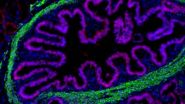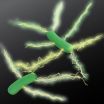(Press-News.org) Improving household electricity access in India over the last 30 years contributed only marginally to the nation's total carbon emissions growth during that time, according to a new study published in the journal Nature Climate Change.
"Energy access is fundamental to development: it brings improvements to all aspects of life, including education, communication, and health," says IIASA researcher Shonali Pachauri, who conducted the study.
While increased energy access is widely agreed to be an important goal for development efforts, such as the UN Sustainable Energy for All Initiative, the climate impacts of increased access to electricity have been unclear. The new study is the first to examine the impact of electricity access on carbon dioxide emissions using two sources of retrospective data.
"This study shows that the climate impacts of expanding access are in fact very small," says Pachauri. However, she adds, expanding low-carbon energy technologies in developing countries would bring many co-benefits beyond climate mitigation.
Pachauri used India as a case study because while the country still lacks electricity access for much of its population—around 400 million people—it has vastly increased access in the last 30 years. From 1981 to 2011, household electricity access in the country improved from around 25% to between 67-74% of the population, an increase of approximately 650 million people.
"India is at a similar stage to many other developing countries in terms of energy access" says Pachauri, "So we believe that these findings will be applicable on a broad scale to other developing countries."
Using two data sources, the study found that improved electricity access in India from 1981 to 2011 accounted for approximately 50 million tons of CO2, or 3-4% of the rise in total national CO2 emissions.
Since electrification also tends to lead to increased wealth and participation in the economy, it can also lead to additional increases in emissions from indirect energy use through consumption. Pachauri found that when she took these factors into account, household electricity use would account for 156 to 363 million tons CO2, or 11 to 25% of emissions growth in the country. However, even with increased electricity use, Indian households still use less electricity than Chinese households, and less than 10% of households in the United States.
Researchers say that even though the emissions growth from expanded energy access is small, low carbon energy sources have additional benefits for developing countries and should be encouraged. Previous IIASA research including the 2012 Global Energy Assessment has shown a broad array of co-benefits from expanding low-carbon, sustainable energy technologies.
Pachauri says, "Low-carbon energy sources bring improved health, efficiency, and can also bring benefits to the economy and employment. And if international climate policies are introduced later, more investment in low-carbon energy sources would mean that developing countries are not locked-in to fossil fuel power and higher costs in the future."
INFORMATION:
Reference
Pachauri, S. 2014. Household electricity access a trivial contributor to CO2 emissions growth in India. Nature Climate Change DOI:10.1038/nclimate2414.
For more information contact:
Shonali Pachauri
Senior Research Scholar
Energy
+43(0) 2236 807 475
pachauri@iiasa.ac.at
Katherine Leitzell
IIASA Press Office
Tel: +43 2236 807 316
Mob: +43 676 83 807 316
leitzell@iiasa.ac.at
About IIASA:
IIASA is an international scientific institute that conducts research into the critical issues of global environmental, economic, technological, and social change that we face in the twenty-first century. Our findings provide valuable options to policy makers to shape the future of our changing world. IIASA is independent and funded by scientific institutions in Africa, the Americas, Asia, Oceania, and Europe. http://www.iiasa.ac.at
Improved electricity access has little impact on climate change
2014-10-19
ELSE PRESS RELEASES FROM THIS DATE:
Lab-developed intestinal organoids form mature human tissue in mice
2014-10-19
VIDEO:
Michael Helmrath, M.D., M.S., surgical director of the Intestinal Rehabilitation Program at Cincinnati Children's Hospital Medical Center, talks about researchers successfully growing human intestinal tissue in mice. The study describes...
Click here for more information.
CINCINNATI --Researchers have successfully transplanted "organoids" of functioning human intestinal tissue grown from pluripotent stem cells in a lab dish into mice – creating an unprecedented ...
Crystallizing the DNA nanotechnology dream
2014-10-19
DNA has garnered attention for its potential as a programmable material platform that could spawn entire new and revolutionary nanodevices in computer science, microscopy, biology, and more. Researchers have been working to master the ability to coax DNA molecules to self assemble into the precise shapes and sizes needed in order to fully realize these nanotechnology dreams.
For the last 20 years, scientists have tried to design large DNA crystals with precisely prescribed depth and complex features – a design quest just fulfilled by a team at Harvard's Wyss Institute ...
Imaging electric charge propagating along microbial nanowires
2014-10-19
AMHERST, Mass. ¬– The claim by microbiologist Derek Lovley and colleagues at the University of Massachusetts Amherst that the microbe Geobacter produces tiny electrical wires, called microbial nanowires, has been mired in controversy for a decade, but the researchers say a new collaborative study provides stronger evidence than ever to support their claims.
UMass Amherst physicists working with Lovley and colleagues report in the current issue of Nature Nanotechnology that they've used a new imaging technique, electrostatic force microscopy (EFM), to resolve ...
I have anxiety, why is my doctor prescribing an antipsychotic?
2014-10-19
Berlin, 19th October 2014 What's in a name? Doctors have found that the name of the drug you are prescribed significantly influences how the patient sees the treatment. Now in a significant shift, the world's major psychiatry organisations are proposing to completely change the terminology of the drugs used in mental disorders shifting it from symptom based (e.g. antidepressant, antipsychotic etc.) to pharmacologically based (e.g. focusing on pharmacological target (serotonin, dopamine etc.) and the relevant mode of action). This will mean that patient will no longer have ...
Major breakthrough could help detoxify pollutants
2014-10-19
Scientists at The University of Manchester hope a major breakthrough could lead to more effective methods for detoxifying dangerous pollutants like PCBs and dioxins. The result is a culmination of 15 years of research and has been published in Nature. It details how certain organisms manage to lower the toxicity of pollutants.
The team at the Manchester Institute of Biotechnology were investigating how some natural organisms manage to lower the level of toxicity and shorten the life span of several notorious pollutants.
Professor David Leys explains the research: ...
New insight that 'mega' cells control the growth of blood-producing cells
2014-10-19
Kansas City, MO - While megakaryocytes are best known for producing platelets that heal wounds, these "mega" cells found in bone marrow also play a critical role in regulating stem cells according to new research from the Stowers Institute for Medical Research. In fact, hematopoietic stem cells differentiate to generate megakaryocytes in bone marrow. The Stowers study is the first to show that hematopoietic stem cells (the parent cells) can be directly controlled by their own progeny (megakaryocytes).
The findings from the lab Stowers Investigator Linheng Li, Ph.D., described ...
Many older people have mutations linked to leukemia, lymphoma in their blood cells
2014-10-19
At least 2 percent of people over age 40 and 5 percent of people over 70 have mutations linked to leukemia and lymphoma in their blood cells, according to new research at Washington University School of Medicine in St. Louis.
Mutations in the body's cells randomly accumulate as part of the aging process, and most are harmless. For some people, genetic changes in blood cells can develop in genes that play roles in initiating leukemia and lymphoma even though such people don't have the blood cancers, the scientists report Oct. 19 in Nature Medicine.
The findings, based ...
Tear duct implant effective at reducing pain and inflammation in cataract surgery patients
2014-10-19
CHICAGO – Oct. 19, 2014 – The first tear duct implant developed to treat inflammation and pain following cataract surgery has been shown to be a reliable alternative to medicated eye drops, which are the current standard of care, according to a study presented today at AAO 2014, the 118th annual meeting of the American Academy of Ophthalmology. The device, known as a punctum plug, automatically delivers the correct amount of postoperative medication in patients, potentially solving the issue of poor compliance with self-administering eye drops.
After cataract ...
Children's genes affect their mothers' risk of rheumatoid arthritis
2014-10-19
BETHESDA, MD – A child's genetic makeup may contribute to his or her mother's risk of rheumatoid arthritis, possibly explaining why women are at higher risk of developing the disease than men. This research will be presented Tuesday, October 21, at the American Society of Human Genetics (ASHG) 2014 Annual Meeting in San Diego.
Rheumatoid arthritis, a painful inflammatory condition that primarily affects the joints, has been tied to a variety of genetic and environmental factors, including lifestyle factors and previous infections. Women are three times more likely ...
Scientists identify mutation associated with cleft palate in humans and dogs
2014-10-19
BETHESDA, MD – Scientists studying birth defects in humans and purebred dogs have identified an association between cleft lip and cleft palate – conditions that occur when the lip and mouth fail to form properly during pregnancy – and a mutation in the ADAMTS20 gene. Their findings were presented today at the American Society of Human Genetics (ASHG) 2014 Annual Meeting in San Diego.
"These results have potential implications for both human and animal health, by improving our understanding of what causes these birth defects in both species," said Zena ...



